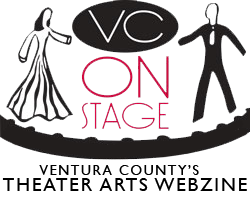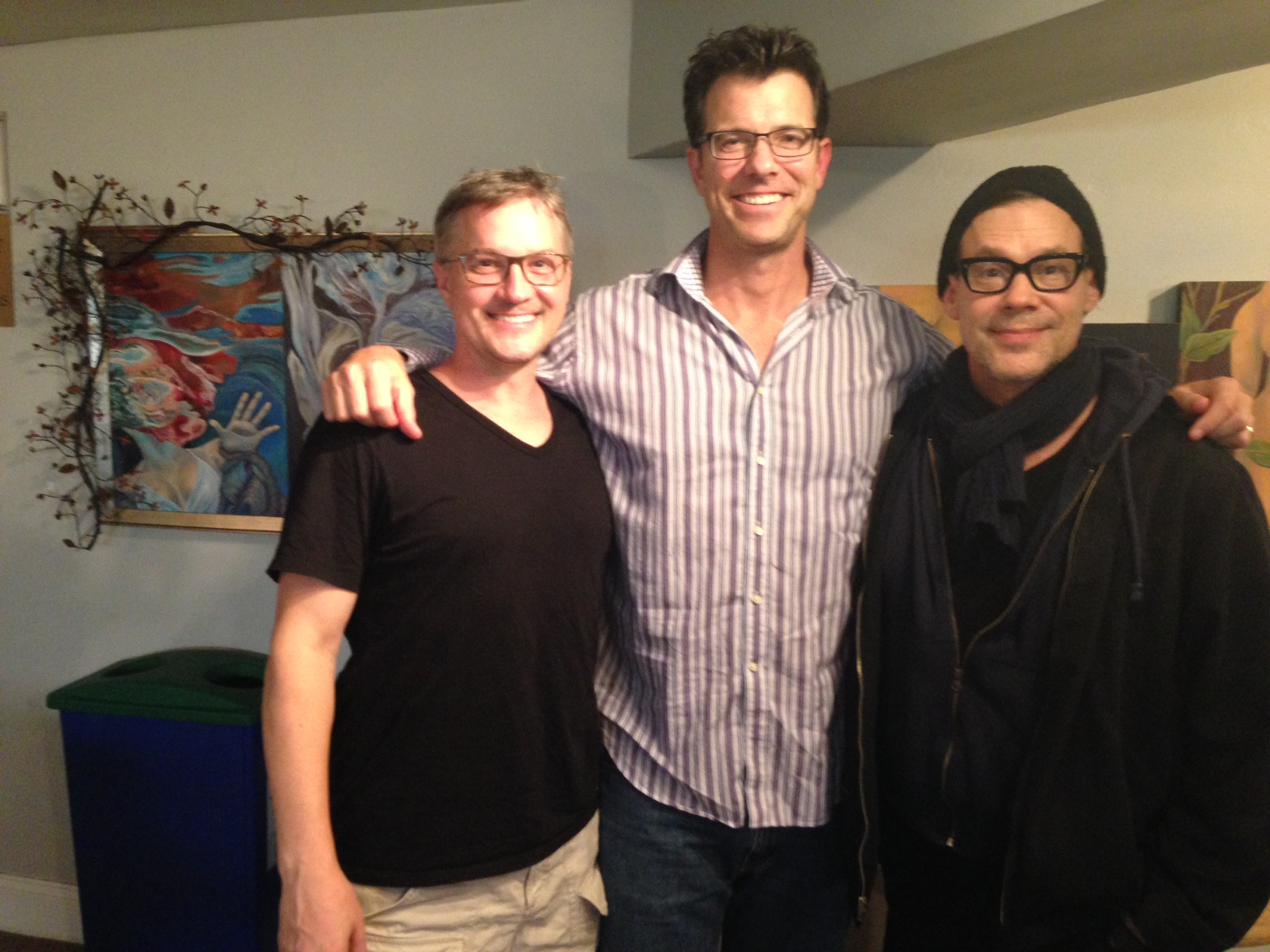BY CARY GINELL
Last week we spoke with Fearless Shakespeare director Joseph Fuqua, dramaturg Jonathan Drahos, and Musical Theatre Intensive director Brian McDonald about their production of Shakespeare’s Twelfth Night. Today we continue our interview with Brian and Joseph about the forthcoming production of In the Heights, which opens this Sunday, August 5 at the Rubicon Theatre Company in Ventura.
VCOS: Gentlemen, the show that comes to mind when I think of In the Heights is Fiddler on the Roof. Both surround a community bound geographically as well as ethnically, both have multiple subplots, and both deal with efforts made by their characters to strive through difficult times for better lives, with relationships outside of tradition a central theme.
BRIAN: I hadn’t really thought of it like that but I can see where you’re going with this regarding the similarities. To me, there is something extremely formulaic about In the Heights. There are a lot of aspects that seem familiar: the style, the way in which the opening introduces us to all these characters, and then you are introduced, via solos or duets, to what the characters want. Each one has an “I want” song, even the Piragua Guy, who is up against corporate America in the form of “Mr. Softee.” So they all have their battles and are trying to survive in this world. To me, it is a play about family, it’s a play about community, and it’s a play that explores the idea of “What is home?” or “What is family?” I love New York. I grew up on Long Island so every time we went to New York it was this really exciting thing. Living in New York, you meet people from so many different places and cultures but they all have this same idea, dream, or desire to be better than our parents and grandparents were. So everyone is moving towards something better for their kids. New York is this wonderful place where you have these groups of people who settle into an area and are all striving for that same purpose and objective, but eventually, another group moves in to do the same thing. “The Heights” is Washington Heights, where all these Dominicans and Cubans and Puerto Ricans live, but before that, it was the Irish, so at the end of the play, they take down this sign and there’s an old sign behind it – it’s the same location, same store, but it’s from someone from another culture.
VCOS: What makes In the Heights unique and sets it apart from other shows?
BRIAN: What’s really exciting to me is that Lin-Manuel Miranda has this amazing voice in his music and the way that he elevates his shows. Hamilton could have been a deadly history lesson but it’s not. It’s period, but it has this very contemporary, in-your-face rhythm so that he’s able to capture what a character is going through emotionally through the rhythms and sounds of the words and the music. In a way, that is what is so incredible about In the Heights. That’s why people are so blown away by this show. It’s so vital. During rehearsals, we can’t help but groove to the music. People are taking videos and we have this pulse going on. It’s really exciting to have that kind of energy throughout the whole show, which separates it from something “traditional.” Miranda is proving that we can do more to get people excited about theatre, and that’s a difficult thing. If we don’t do our jobs properly, people are not going to want to come back. A theater ticket can be pretty pricey for a lot of people and I don’t think that that should be the way it should be. It should be accessible. People should want to come to the theater and experience different worlds and that sort of communal event. In the Heights certainly does that.
VCOS: How do you do this show in the Rubicon, which is not a theater that does “large” shows like this?
BRIAN: We’re trying to open it up. Kids will be walking through the audience and they’ll be in the balconies singing, so that you feel like you’re part of this community.
JOSEPH: People love to see shows where the artistry bursts at the seams of the theater.
VCOS: Especially in shows where you have larger-than-life characters, which can make a little theater like the Rubicon actually seem to be breathing on its own.
JOSEPH: Last year, the Musical Theatre Intensive program did West Side Story, and that music, in that small space, was just incredible.
BRIAN: We have nine musicians, which is the size of the touring company, and they’re going to be upstairs in the balcony. So it will be very live. When we did West Side Story, they had an 18-piece orchestra in the basement and the sound was piped in. I will say that the cast is phenomenal. Really. That’s one of the really cool things is that, in a school, you have a group of students that you have to select from, and you’ve got to find SOMEBODY who can play each role.
VCOS: In this case, what about the ethnicity of the characters? How meticulous are you with this?
BRIAN: Not everybody that has been cast is Puerto Rican or Dominican or whatever. It’s interesting. There’s this fight going on where I see, every now and then, on Facebook, people getting upset about this cast or that cast, with something like The King and I or Prince of Egypt and they cast white people in the roles. The community of actors who are, perhaps, appropriate for those roles are complaining about that, and I’m not sure how I feel about that. There are certainly times where there has to be that kind of authenticity to what you’re doing.
VCOS: Like in Ragtime, for example.
BRIAN: Right. But theater is all about the imagination and I believe that we need to start to break down barriers by not deciding that this is what it should look like or sound like.
VCOS: I reviewed The Mikado a few years ago here in Thousand Oaks and got hate mail from two Asian-American actors from the West Side of Los Angeles who were complaining not just that we were using white actors in the roles but that the show should be staged at all anymore. They claimed that it was no better than minstrelsy, with white actors performing in “yellow face.”
BRIAN: How do you say that and then, on the other side, defend the argument that “Just because I’m gay doesn’t mean that I can’t play a straight man?” Or that kind of argument?
VCOS: In this case, the company was drawing from a pool of actors who auditioned, and there were no Asian actors.
JOSEPH: I think that on the little theater level that serves as a training program in communities and colleges that you just have to do these great pieces. You don’t have to see their bar mitzvah certificate for an actor to play Roy Cohn in Angels in America. There has to be some kind of latitude. But in the professional world, if there was a professional production in London and they did a worldwide search to do the film version of The Mikado, I could see somebody complaining by saying, “Why are you giving that to Keira Knightley when there’s a perfectly good actress who happens to be the right ethnicity?” And besides, The Mikado was written for people to perform in yellow face, so it doesn’t matter. What started all this was Miss Saigon with Jonathan Pryce. He started it, but when it came to New York, there were plenty of Vietnamese actors who could have nailed that role of The Engineer, and they won, because forevermore, they now try to cast someone who at least looks like what the role should be. As long as they’re ethnic in some way, you can do it, so long as you’re not a white guy.
VCOS: Then again, the most famous King in The King and I was Yul Brynner, who was a white Russian.
JOSEPH: And Rex Harrison did it before Yul Brynner!
BRIAN: The other really cool thing about that is that when you have a student playing a character who is perhaps from a different world or a different culture, it’s really great for them to step into those shoes. What better way to understand someone else’s perspective than to actually live and breathe it?
JOSEPH: One final thing about this program. Even the littlest kids get the benefit of these great production values, as far as costuming, lighting, and all that goes. We really put them through their paces and their parents appreciate that. They’re not being dragged to a little school play with cardboard sets – well, we do have some of that (laughs) – but we really give it to them. For the older kids, we really fight to raise them above what they get from their dramatical society in high school.
BRIAN: This year, when we finished James and the Giant Peach, I must have had ten sets of parents come up to me and tell me that they want us to do this all year round. The places they’ve worked with don’t get anywhere near the professionalism they get here, and they like that we push their kids to do better because they can. So it is true and I am grateful to have the support of this great theater and the people that are in it.
***********************
In the Heights plays from August 5-13 at the Rubicon Theatre Company. For dates and showtimes, see the VC On Stage Calendar. Look for our review next week in VC On Stage.






No Comments